GTG Links 43 – Sega & Rovio ESG analysis, climate chaos & costs + internet cable repair guys

ESG season rolls on, with the trickle of new reporting coming down the pipe. But first, check out this cool new (academic) piece by Friend of the Newsletter Larry May and co-author Ben Hall:
Thinking ecologically with Battlefield 2042
We analyse a dataset of player-generated paratexts that were systematically gathered from three popular online communities associated with Battlefield 2042. Our analysis demonstrates the effect the game’s entanglement with contemporary climate anxieties has on its online communities and reveals the multiplicity of player encounters with different forms of ecological thought.
Rovio's 2023 Sustainability Report
A couple of new details include that Rovio is currently looking at the feasibility of a net-zero target (great!), and we've got new figures for their 2023 annual footprint.
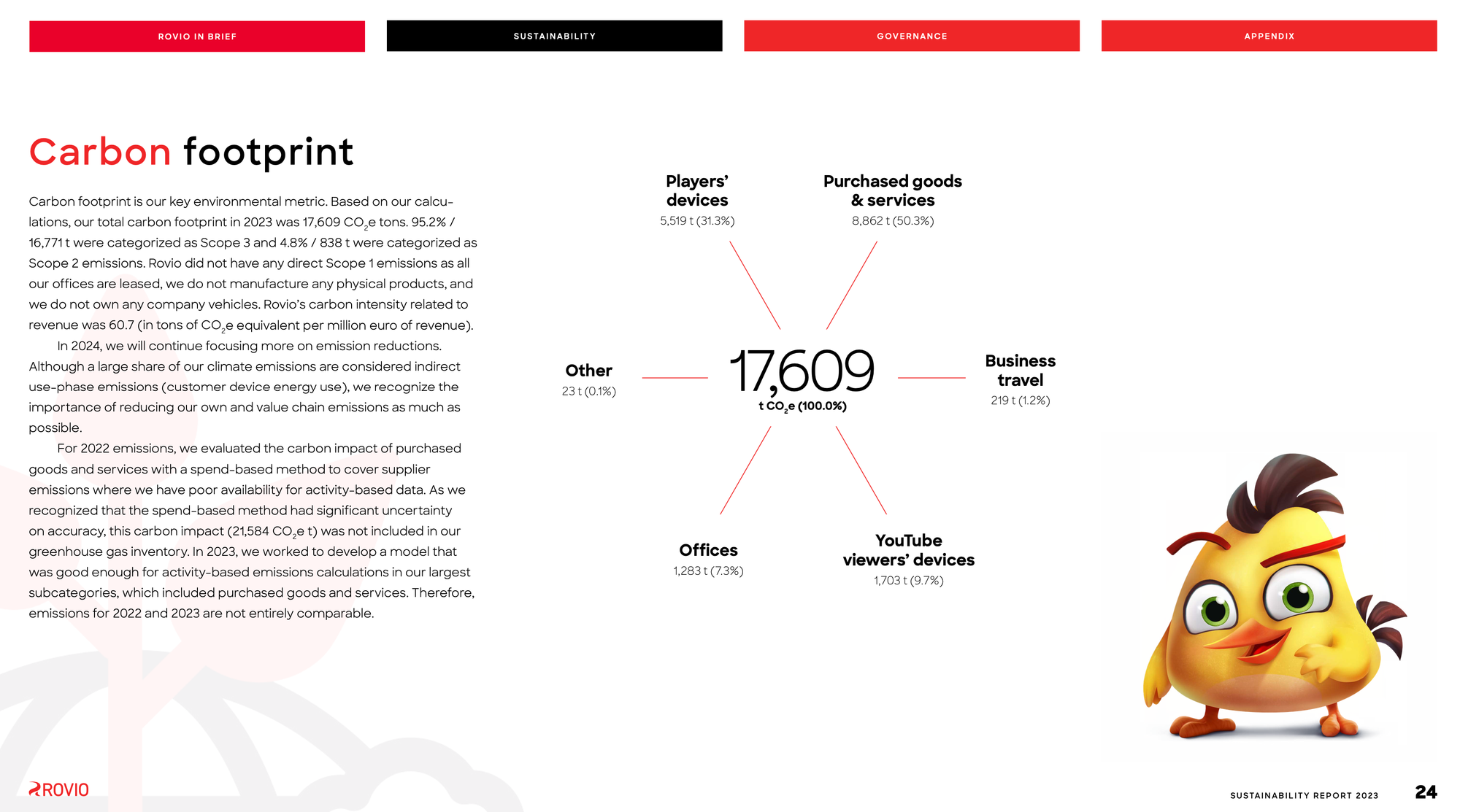
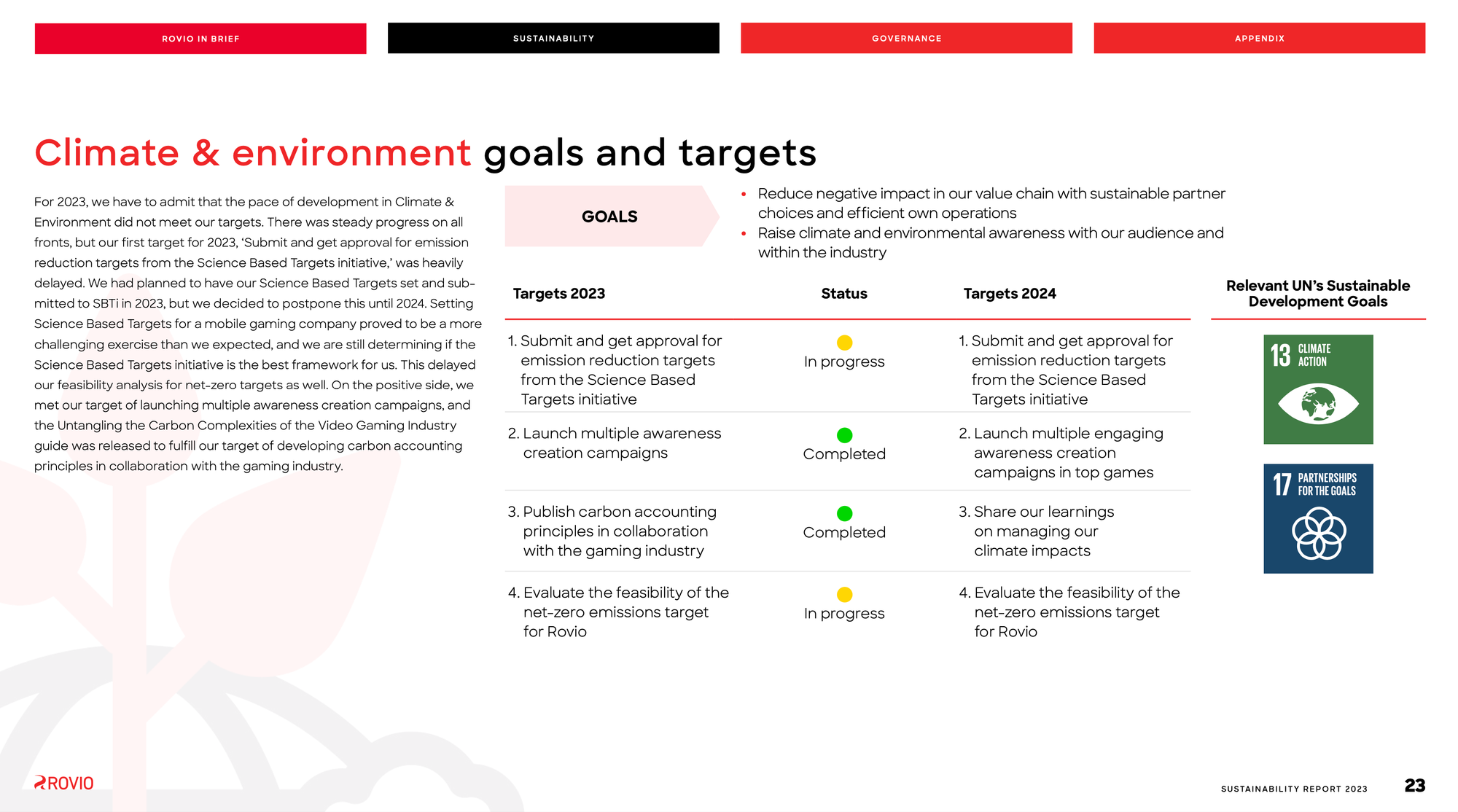
Check out the full report here [PDF].
Sega Sammy's annual ESG reporting
Rovio's new owners (Sega Sammy) have also released their ESG report and data (see table below) – but this was done back in November last year. We only just spotted it now, but here it is for anyone interested [PDF].
Just going off the data: Scope 1 emissions are up, Scope 2 are down (purchasing more renewables, I guess?), and Scope 3 are well up. This is partially (or maybe even mostly?) 2022 figures as the Japanese fiscal year ends in March, so these are 9 months of 2022 and the first quarter of 2023. The data here wouldn't include Rovio then (which would push these numbers up by the amount disclosed by Rovio above) since the acquisition happened mid-year. But also what disclosures we dom get show that once again, we need some metrics alongside the absolute emissions figures to really understand what sort of trajectory a business is on.

You'll have to excuse the slightly confusing graph, but it's important to see the raw data vz the marketing friendly version. FY2021 & FY22 were "dip" years, thanks to the pandemic, but FY23 is pushing back up towards pre-pandmic numbers. Are they more profitable than in 2019? A bit, yes, but not massively so. CO2 intensity per dollar earned then... probably not showing any real signs of decoupling profitability from emissions (yet).
Here's the glossy sustainability strategy vision page:
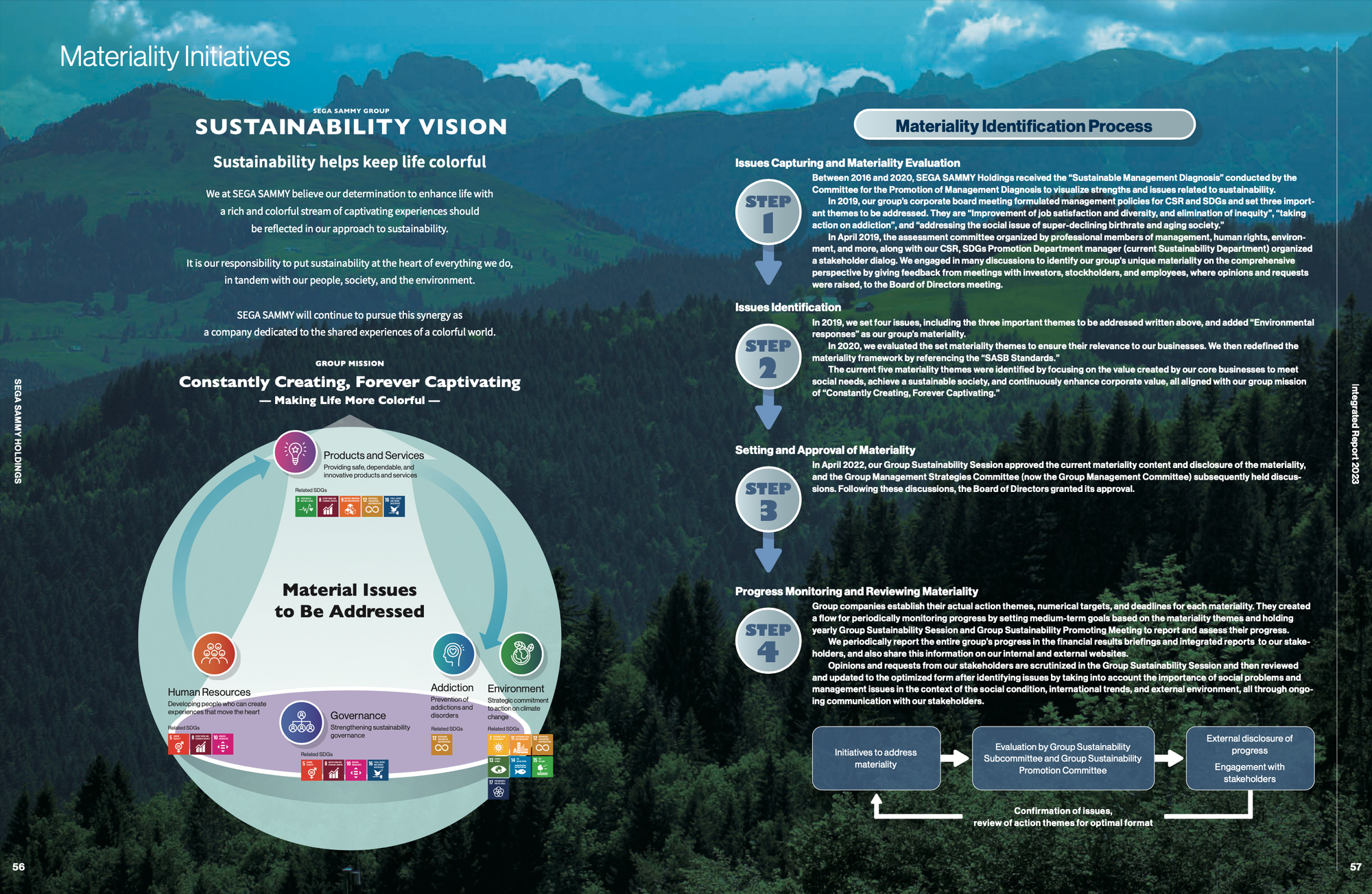
And below, on the right hand side of the page we get a similar encouraging "Scope 1 & 2" graph which seems to illustrate falling emissions (by extrapolating to the 2030 target). That's... fine, but where's Scope 3? Buried in that overburdened graph at the top, or only later on deep in the bowels of the report's charts and not added up to show totals. To be clear I'm not accusing anyone here of deliberate distortions, its natural to want to put the the best view forward, but we also have to be clear about where we are and the challenge ahead of us.

The report does disclose all three scopes eventually, but it's bit dissapointing to present these without totals for all three. The (good!) reduction in Scope 2 emissions, are unfortunately more than offset (in the negative sense) by the increase across both Scope 1 and Scope 3.
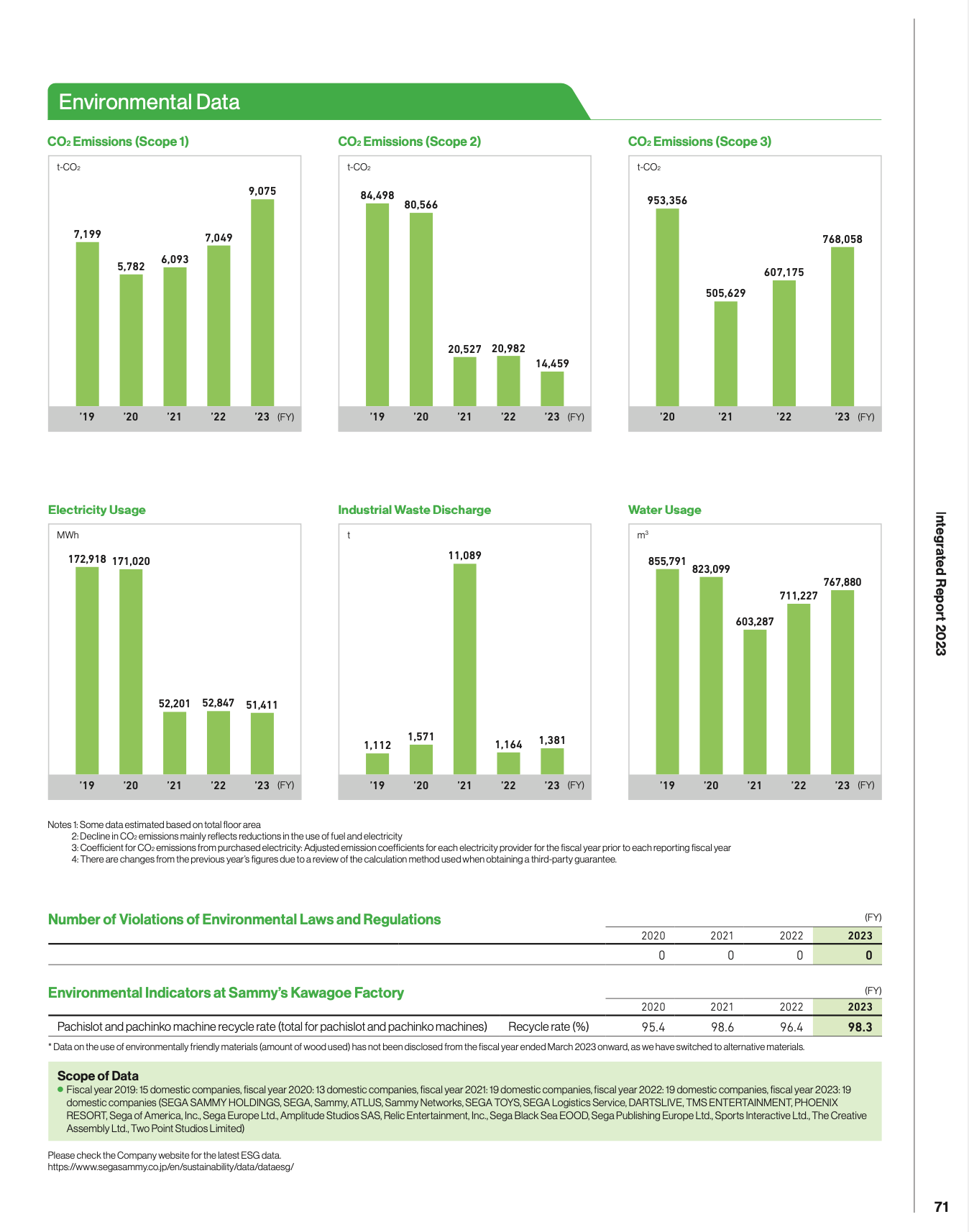
Corporate Targets under scrutiny in Carbon Market Watch's latest report
Things looking dicey for crucial 2030 targets from the biggest companies in the world – realistically, these near-term targets are more important than 2050 targets. The time to act is yesterday.

Deep sea internet cable repair teams – the people keeping the internet connected
This long read was one of the best pieces about the physical infrastructure I've read in a loooooong time. Simply incredible with details about the process of splicing and repairing ocean spanning cables, the political-economic dynamics facing the industry, and the people who perform this incredibly essential work. Sit down with a cuppa and enjoy it!
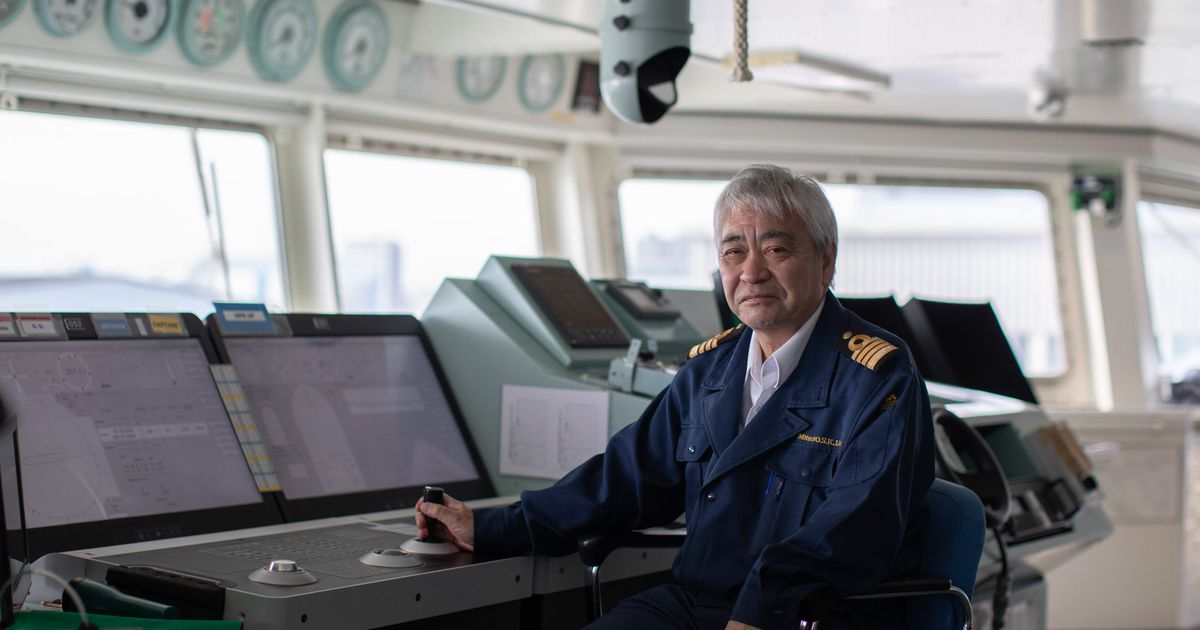
Nvidia's AI chips energy consumption
This graph is just for Nvidia's H100 tensor core, AI specialised data centre chips! It's not even counting for any 4090s. Are those overshadowed by the data centre chips I wonder? Your guess is as good as mine.
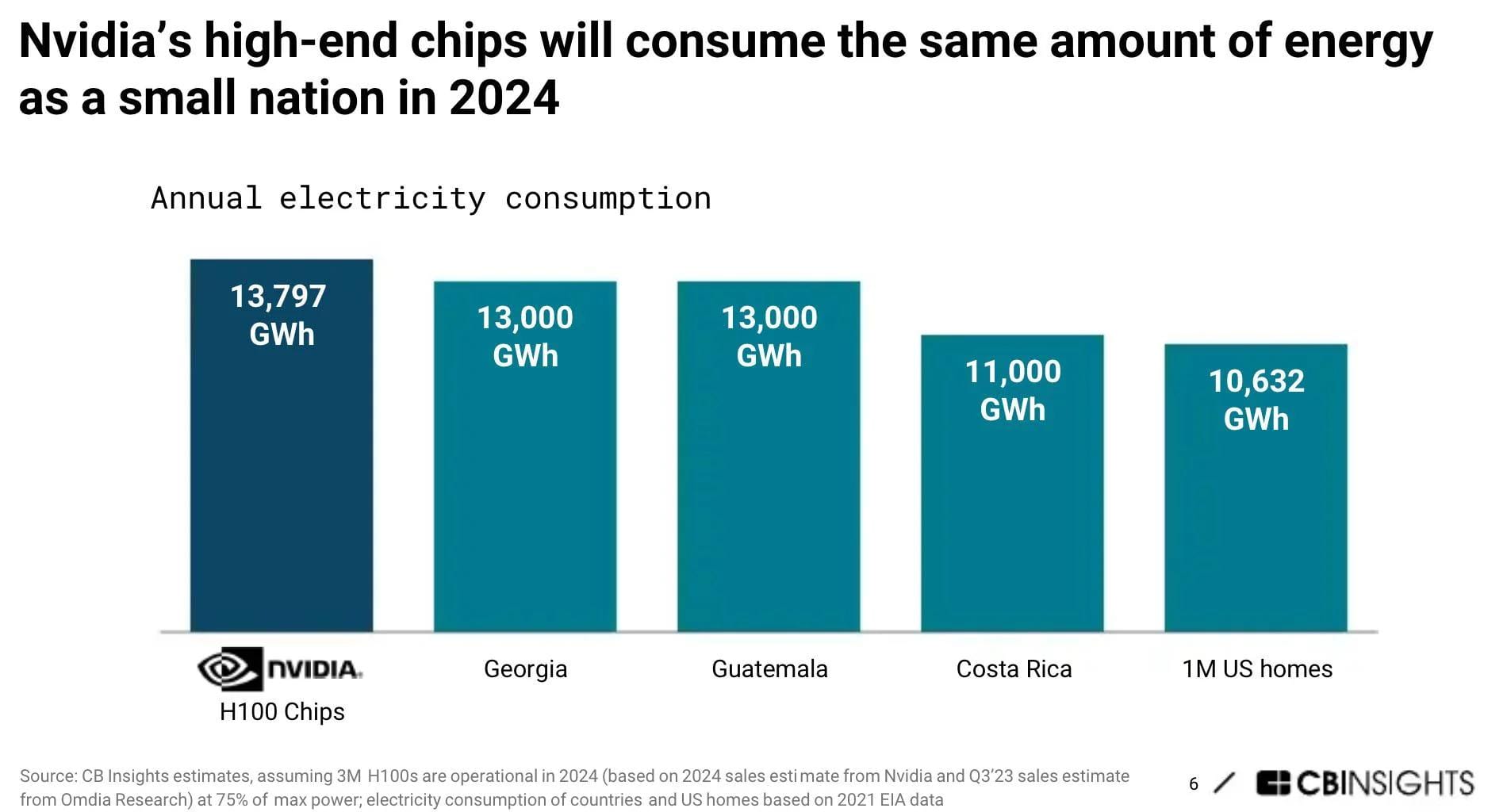
Cartography of generative AI
Very cool illustration of how these systems work and the infrastructure it all depends on.
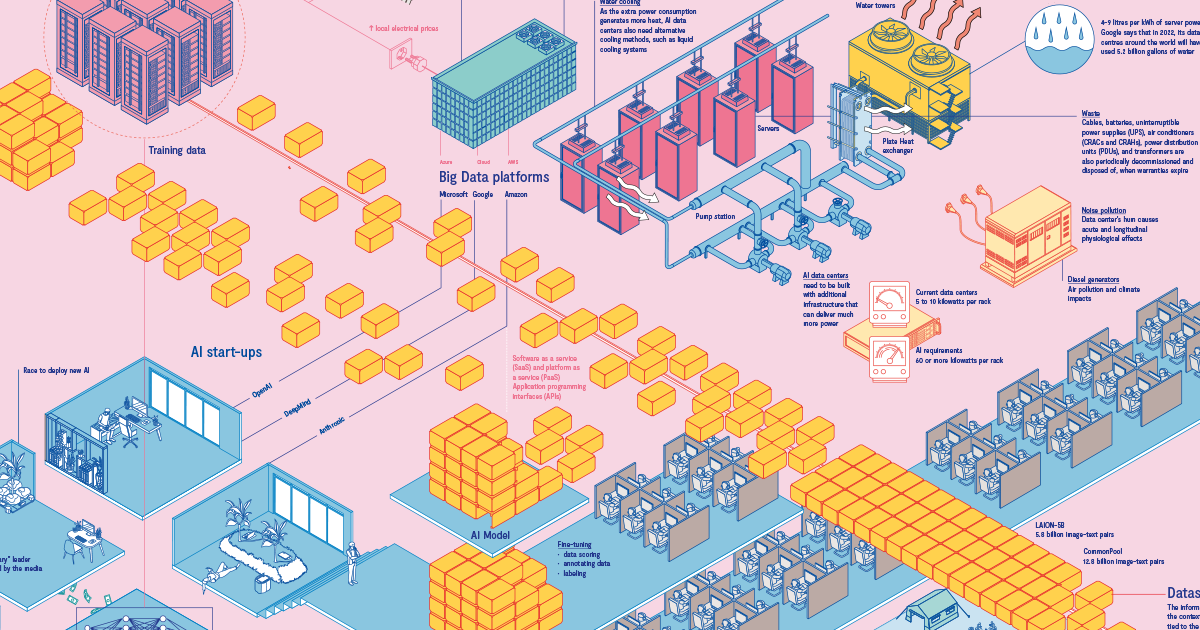
Climate Chaos Corner – LatAM special edition
Bogota is in deep drought.

And Dengue Fever is doing bad things t0 Argentinian's health, thanks in part to extending warm periods.
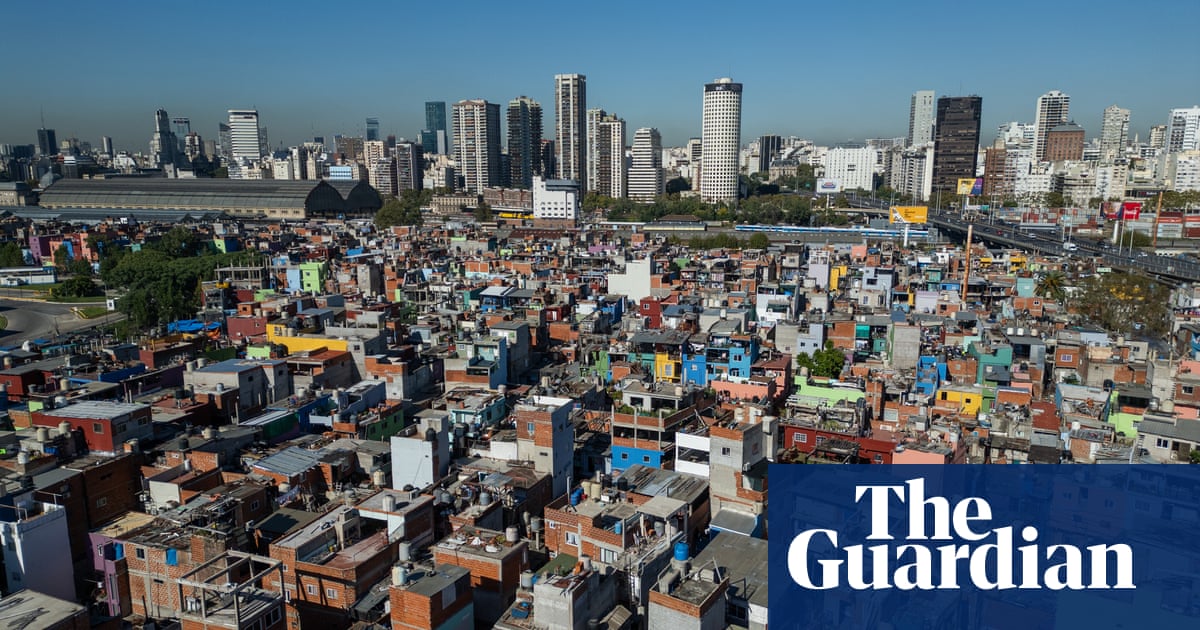
“Our study shows that the thermal favourability for the mosquito to continue acting for longer has increased and, in this year’s case, has spread among more people,” says Sylvia Fischer, a researcher at Conicet and a co-author of the forthcoming report. “The conditions of large cities, with a large part of the population living in densely populated areas, is another significant factor.”
…
Milei’s administration has made no secret of its contempt for environmental matters, and the president called the climate crisis a ‘“socialist lie”, and reduced the health ministry’s budget by 40%.
Dubai's flooding was intense
Costs of Climate Chaos
Speaking of climate impacts – a huge new study was just released, in which researchers look at the locked in costs of climate change just based on the warming we've already achieved:
Using an empirical approach that provides a robust lower bound on the persistence of impacts on economic growth, we find that the world economy is committed to an income reduction of 19% within the next 26 years independent of future emission choices (relative to a baseline without climate impacts, likely range of 11–29% accounting for physical climate and empirical uncertainty). These damages already outweigh the mitigation costs required to limit global warming to 2 °C by sixfold over this near-term time frame and thereafter diverge strongly dependent on emission choices.
My take on this sort of work is that there's only one real conclusion. Degrowth is either coming in a planned way, led by democratic principles and the curtailing of the exorbitant excesses of the worst offenders (ie the global rich), or it's coming in a shambolic, chaotic way that will destroy so much we take for granted.
That might sound alarmist but, well... just look around you. Alarms have been blaring for years.
It's not all doom though: Adam Tooze on the interface between the Brazil's agricultural boom and Amazon protection efforts is... encouraging
Amazon deforestation is terrible and major producers do engage in it and are tied to global supply chains. But the main offender here is beef and in quantitative terms Amazonian deforestation is a spillover and not a central dynamic in Brazil’s agricultural boom of recent decades. It follows that to save the Amazon we don’t need to halt the Brazilian agroindustrial juggernaut. What needs to be done is for Brazilian authorities to vigorously and proactively enforce its extensive forestry laws and protect indigenous rights. This is no mean task. It involves confronting substantial local interests with the greater force of national power. But it does not involve a revolutionary overthrow of the existing order of things.
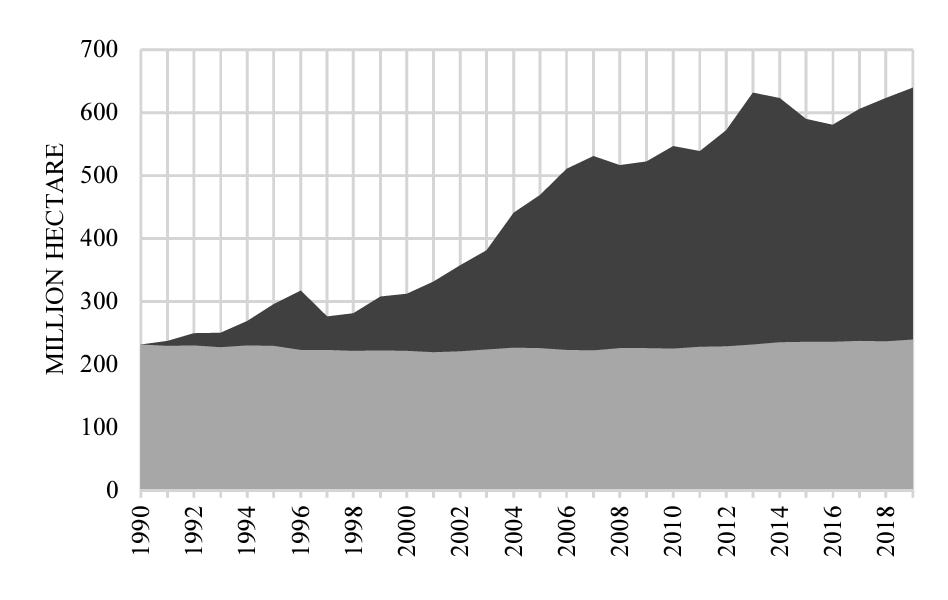
Give communities control over carbon removal
A striking proposal to put power over carbon removal in the hands of the people.

How long to decommission an early nuclear plant?
World Nuclear News (which doesn’t seem to be anti-nuclear by any means) describes the completion of a 20 year long process (!!) to remove a particular sort of nuclear waste from an early decomissioned nuclear reactor in Scotland. The mind boggles.

Development banks finance – new report by Oil Change international
Here are a few key findings from the report:
- From 2020-2022 support for fossil fuels from G20 countries international finance institutions and MDBs averaged at least USD 47 billion a year, almost 1.4 times their support for clean energy in the same period. Just 8% of all G20 and MDB international finance for energy went to low-income countries.
- Of that, 71% was for fossil fuels, and delivered virtually no energy access, despite this argument being used frequently to justify continued fossil fuel finance.
- The majority of G20 countries’ clean energy finance is going to wealthy countries, not to where it is most needed. Between 2020-2022, just 3% of all clean energy financing went to low-income countries.

Not a great outlook - LNG forecasts remain high for SEA as renewable build-out miss targets
Japan, Korea and Taiwan are all struggling to meet their emissions reduction targets as they work to decarbonize their energy systems. Failures to grow renewables in the power sector fast enough to meet end-of-decade emission targets mean that there will inevitably be recourse to LNG and even coal imports at higher volumes for longer. While all three countries are publicly committed to decarbonization, they are characterized by varied political approaches and energy circumstances. But important commonalities exist amongst the three. In terms of renewables, the most obvious is that while some growth is evident in solar power, wind power growth has lagged behind targets badly. Nuclear restarts in Japan remain a vexed political topic and are therefore uncertain while, on the other hand, Korea’s plans to sustain recent strong growth look reasonable given new nuclear plants under construction. Taiwan’s commitment to winding down nuclear by next year means more LNG as its growth in renewables falls short. All other things being equal we expect LNG is likely to maintain a stronger profile in the energy mix – closer to the OIES Declared Policy Scenarios (DPS) than the IEA or even some government targets. Government reality checks on energy strategy that may include relaxation of medium and long-term emissions targets, would reinforce that expectation.
Phew! Long one this week. Thanks for sticking around. If you enjoyed it please consider sharing it with someone else who you think might too.




